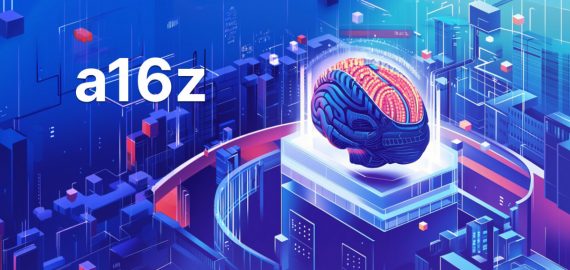Bridging Blockchain With AI: Challenges And Opportunities In Privacy, Security, And The Future Of AGI


In Brief
At Hack Seasons in Cannes, experts from Near AI, Automata, SuperNet, Venice, and the Ethereum Foundation explored private AI development—highlighting local AI on consumer devices, cryptographic security, and the need for frictionless privacy in sectors like healthcare and finance.

At the beginning of July, Cannes hosted the cutting-edge Hack Seasons Conference, bringing together leading technologists, investors, and builders to examine the evolving intersection of blockchain and AI. One of the main sessions at the Tech Track, moderated by Jay Z, Product Lead at Near AI, convened experts including Deil Gong (Automata), Juan Bruce (SuperNet), Teana Baker-Taylor (Venice), and Devansh Mehta (Ethereum Foundation), to discuss the safe and secure development of private AI.
The panel opened by addressing lesser-known but practically important insights at the intersection of blockchain and AI. One key point was that modern consumer devices are now powerful enough to run open AI models locally, enabling private and decentralized AI services without the need to share data externally. As hardware continues to evolve, these capabilities are expected to become even more accessible. Panelists also emphasized a common misconception: conflating AI with large language models (LLMs). AI, they noted, is most effective when operating within a clearly defined context and perspective. Another notable insight was that AI represents the first widely adopted form of non-deterministic computing—unlike traditional software, it does not consistently produce the same output given the same input. This unpredictability complicates standard benchmarking, which is why some decentralized information markets (InfoFi) rely on AI systems instead.
The panel also examined technical approaches to secure AI, specifically comparing zero-knowledge (ZK) proofs and trusted execution environments (TEE). Some speakers argued these technologies can be complementary—while TEE offers real-time hardware-based security, it does not inherently guarantee privacy. ZK proofs may become more useful in the long term, but currently lack sufficient performance for some real-time applications. Both approaches ultimately rely on hardware development, and panelists stressed the importance of collaboration with hardware manufacturers to support next-generation cryptographic and AI systems. They also addressed a growing concern: whether in the context of artificial general intelligence (AGI), private keys will remain secure, or if AI will eventually learn to extract them. This question lies at the heart of where AI and cryptography intersect.
Another focal point of conversation was the growing gap between stated user preferences for privacy and actual behavior. Panelists noted that most users currently show limited concern for privacy, often sharing sensitive information like location and payments on social media. As LLMs gain access to such data, they can infer more about users than users consciously know about themselves. While privacy remains a critical topic, panelists agreed it must be built into systems in a frictionless way to achieve meaningful adoption. Regulation was seen as a potentially helpful force, particularly if it limits unchecked data collection or unauthorized AI training by large platforms.
The conversation turned to sectors most likely to benefit first from private, secure AI technologies. Industries like medicine, insurance, e-commerce, law, and capital allocation were highlighted as early candidates due to their high sensitivity to data privacy and security standards.
Panelists also discussed how new projects are being built using AI. With advances in “vibe coding” and AI-assisted development, teams can now move quickly from ideas to implementation. Developers increasingly rely on on-chain AI applications that can verify computation automatically. This makes verifiable AI a core focus area—shifting emphasis from building entire toolchains manually to deploying usable, secure applications.
The panel concluded with a provocative question: Will AGI choose Bitcoin? Opinions were divided. Some argued AGI would likely favor stablecoins for transactional stability, while others suggested AGI might compete with Bitcoin for computing resources—potentially reallocating mining energy to other computational needs. There was also recognition that AGI may ultimately benefit from Bitcoin’s innovations, as the broader cryptocurrency sector continues to mature in parallel with AI.
Don’t miss the full panel video — see all the insights and ideas in one place.
Disclaimer
In line with the Trust Project guidelines, please note that the information provided on this page is not intended to be and should not be interpreted as legal, tax, investment, financial, or any other form of advice. It is important to only invest what you can afford to lose and to seek independent financial advice if you have any doubts. For further information, we suggest referring to the terms and conditions as well as the help and support pages provided by the issuer or advertiser. MetaversePost is committed to accurate, unbiased reporting, but market conditions are subject to change without notice.
About The Author
Alisa, a dedicated journalist at the MPost, specializes in cryptocurrency, zero-knowledge proofs, investments, and the expansive realm of Web3. With a keen eye for emerging trends and technologies, she delivers comprehensive coverage to inform and engage readers in the ever-evolving landscape of digital finance.
More articles

Alisa, a dedicated journalist at the MPost, specializes in cryptocurrency, zero-knowledge proofs, investments, and the expansive realm of Web3. With a keen eye for emerging trends and technologies, she delivers comprehensive coverage to inform and engage readers in the ever-evolving landscape of digital finance.


















































